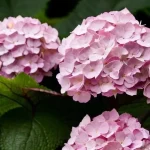Today is 10/04/2025 07:14:59 ()
In an increasingly urbanized world‚ where concrete often outshines flora‚ the yearning for green spaces and a connection to nature has never been more profound․ As cities continue their vertical ascent and our climate undergoes noticeable shifts‚ a burgeoning movement of individuals is discovering the profound joys and myriad benefits of cultivating their own vibrant ecosystems․ From bustling city balconies transforming into lush edible havens to suburban backyards becoming havens of biodiversity‚ the call of the soil is incredibly compelling‚ drawing in countless aspiring horticulturists eager to embark on this enriching journey․
Yet‚ for many‚ the initial steps into the verdant world of gardening can feel daunting․ The sheer volume of advice‚ the myriad plant choices‚ and the seemingly complex requirements can easily overwhelm even the most enthusiastic beginner․ Visions of perfectly manicured beds might quickly succumb to the reality of wilting seedlings or stubborn pests‚ leading to discouragement․ However‚ experts consistently reassure us that cultivating a thriving garden isn’t an arcane art reserved for seasoned pros; it’s a remarkably achievable endeavor‚ provided you approach it with fundamental knowledge and a sprinkle of patience․ By integrating insights from successful urban farmers and drawing upon time-tested horticultural principles‚ anyone can transform their outdoor (or indoor) space into a flourishing sanctuary․
| Category | Key Information for New Gardeners | Reference Link |
|---|---|---|
| Fundamental Principles | Understanding your garden’s unique microclimate‚ including sunlight exposure (full sun‚ partial shade)‚ wind patterns‚ and existing soil conditions‚ is paramount․ Patience and observation are your most valuable tools․ | RHS: Beginner’s Guide to Gardening |
| Easy Starter Plants | Begin with resilient‚ high-yield plants that tolerate minor mistakes․ Excellent choices include grape tomatoes‚ mini bell peppers‚ various lettuces‚ radishes‚ bush beans‚ marigolds (for pest deterrence)‚ and easy herbs like mint or basil․ | |
| Essential Tools | You don’t need an arsenal to start․ A sturdy hand trowel‚ a pair of gardening gloves‚ a reliable watering can or hose‚ and pruning shears are typically sufficient for foundational tasks․ | The Old Farmer’s Almanac: Gardening 101 |
| Resource Management | Be realistic about your available time‚ energy levels‚ and physical space․ Starting small and expanding gradually prevents burnout and ensures a more enjoyable experience․ Consider container gardening for limited spaces; | Better Homes & Gardens: Beginner Tips |
1․ Love Your Soil‚ Love Your Garden: The Unseen Foundation
Beneath the vibrant blossoms and robust foliage lies the true heart of any thriving garden: its soil․ Often overlooked‚ the quality of your soil profoundly dictates the health and productivity of your plants․ As Ben Vanheems‚ a respected gardening authority‚ wisely advises‚ “Love Your Soil․” Rich‚ living soil‚ teeming with beneficial microbes and organic matter‚ acts as a nutrient reservoir‚ a moisture regulator‚ and a sturdy anchor for roots․ For beginners‚ enriching existing soil with compost is an incredibly effective strategy․ This organic amendment improves drainage in heavy clays and water retention in sandy soils‚ providing a balanced environment where roots can truly flourish․ Think of healthy soil as the garden’s immune system‚ proactively protecting plants from stress․
2․ Sunlight and Water: The Garden’s Lifeblood
Just as humans require air‚ plants fundamentally depend on sunlight and water for survival․ Observing your garden’s unique microclimates—the areas that bask in full sun‚ those graced by partial shade‚ and the perpetually shaded spots—is a critical preliminary step․ Most edible plants‚ from tomatoes to peppers‚ crave at least six hours of direct sunlight daily․ Water‚ too‚ demands careful consideration․ While plants appreciate consistent moisture‚ overwatering can be as detrimental as underwatering‚ leading to root rot․ Experts suggest watering deeply but infrequently‚ aiming for 1 to 2 inches per week‚ either from rainfall or manual application․ This encourages roots to delve deeper‚ making plants more resilient to dry spells․ A simple finger test‚ feeling an inch or two into the soil‚ provides an accurate gauge of moisture levels‚ preventing guesswork․
3․ Start Small‚ Grow Big: The Power of Simplicity
The temptation to cultivate a sprawling‚ diverse garden from the outset is strong‚ yet restraint often yields greater success for novices․ “Don’t bite off more than you can chew‚” is a mantra frequently echoed by gardening mentors․ Beginning with a manageable number of easy-to-grow plants‚ such as grape tomatoes‚ mini bell peppers‚ lettuce‚ or radishes‚ allows you to learn the rhythms of gardening without feeling overwhelmed․ Container gardening‚ in particular‚ offers a remarkably effective entry point‚ especially for urban dwellers․ It provides flexibility‚ control over soil conditions‚ and the ability to move plants to optimal sunlight‚ transforming balconies and patios into surprisingly productive green spaces․ This focused approach builds confidence‚ paving the way for future expansions․
4․ Strategic Planning for Bountiful Harvests: Beyond the Seed
Gardening is not merely about planting seeds; it’s an art of foresight and spatial ingenuity․ Planning your garden layout‚ considering plant mature sizes‚ and understanding succession planting are pivotal; Succession planting‚ for instance‚ involves staggering plantings of the same crop every few weeks to ensure a continuous harvest rather than a single overwhelming bounty․ For those with limited horizontal space‚ especially in urban environments‚ vertical gardening offers an innovative solution․ Growing plants upwards on trellises‚ arbors‚ or wall-mounted planters maximizes yield per square foot and adds captivating aesthetic appeal‚ reflecting a forward-thinking approach to resource utilization․
5․ Embrace the Journey‚ Not Just the Destination: Sensory Delights
Beyond the tangible harvests‚ gardening offers a profound‚ multi-sensory experience that enriches the soul․ Engaging all five senses—the sight of vibrant blossoms‚ the intoxicating scent of herbs‚ the tactile pleasure of rich soil‚ the sweet taste of freshly picked produce‚ and the gentle rustle of leaves in the breeze—transforms a simple hobby into a meditative practice․ This holistic engagement fosters mindfulness and a deeper connection to the natural world‚ proving that the true reward lies not just in the fruits (or vegetables) of your labor‚ but in the entire nurturing process․ Cultivating this awareness elevates gardening from a task to a deeply fulfilling passion․
6․ Continuous Learning and Adaptation: The Gardener’s Ethos
The world of gardening is an ever-evolving tapestry of discovery․ Every season brings new lessons‚ challenges‚ and opportunities for growth․ Rather than viewing setbacks as failures‚ perceive them as invaluable learning experiences․ A plant struggling in one location might thrive in another; a pest issue could be an indicator of an underlying soil imbalance․ By observing‚ adapting‚ and continuously researching‚ gardeners cultivate not just plants‚ but also an incredible resilience and problem-solving mindset․ This forward-looking approach ensures that each gardening season is more successful and rewarding than the last‚ building a wealth of practical wisdom․
7․ The Joy of Sharing: Cultivating Community
Ultimately‚ gardening transcends individual effort; it often fosters a vibrant sense of community․ Sharing surplus harvests with neighbors‚ exchanging tips with fellow enthusiasts‚ or even gifting homegrown produce creates bonds and strengthens local networks․ This communal aspect amplifies the joy of gardening‚ transforming it into a shared endeavor that enriches everyone involved․ As we look towards 2025 and beyond‚ the act of gardening‚ whether a small pot on a windowsill or a sprawling backyard oasis‚ remains a powerful‚ optimistic statement about our desire to nurture‚ to grow‚ and to connect‚ promising a greener‚ more sustainable future for all․






